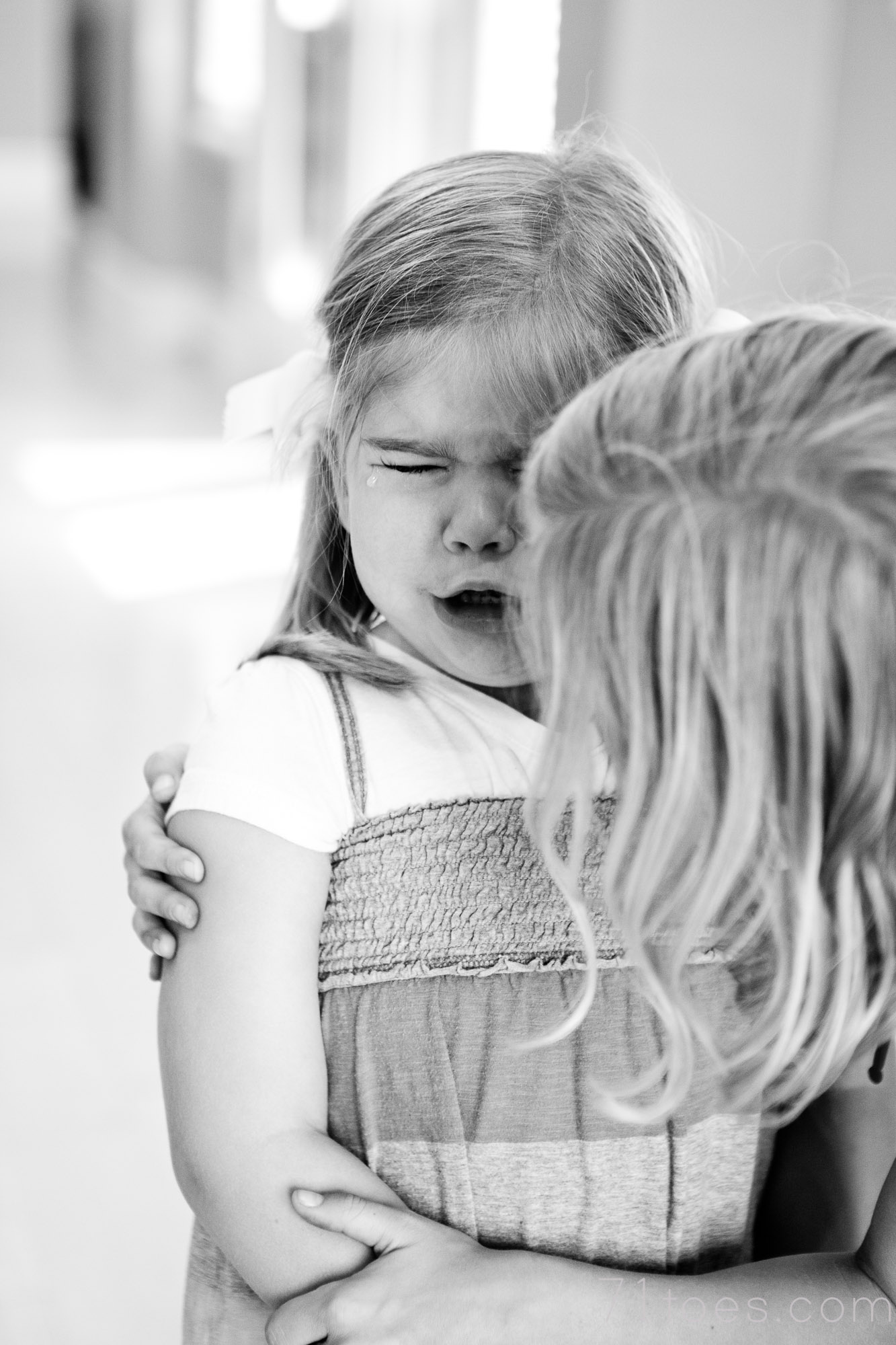
How to Teach Emotional Resilience
Did you know that labeling emotions can help create neurological patterns in a child’s brain? And an adult’s too for that matter. Putting a label on how we are feeling and being able to discuss it is the first step to emotional resiliency.
The other day Lucy came home in the depths of despair over some friendship issues. And oh! as a mother sometimes that kind of sorrow just does you in, am I right?
Oh my heart so aches for my little social girl who is in the process of trying to hold on to so many things as she looses so many with her dwindling vision. I pulled her out on the porch with me to talk and felt a little nudge to stop in my tracks of trying to cheer her up and to just let her know it’s ok to be sad. Everyone is sad sometimes, sometimes life is just sad.
We can choose to pull up our bootstraps and move on, or we can just sit with the sadness for a little while, and both are good options. I just felt so much love for that girl, especially when she went from insisting to sit far away from me when we first sat down to coming over and snuggling into me, draping her legs diagonally across the top of mine, feet dangling, tears just spilling down her cheeks.
Safe.
I don’t always chose this option. Far too often I get into the “pull-up-your-bootstraps-and-get-busy-living” mode. But I was glad that I listened to that little nudge that day to let her chose. Let her label those emotions.
Three simple tips to help kids foster emotional resilience:
1) Let kids label their emotions.
Sometimes we are so quick to sweep feelings under the rug. “Oh, you don’t really feel that way!” Blah, blah, blah. But if a child really feels a certain way, even if to you it feels selfish or silly, they need to be able to talk about those emotions. We’re all coming from different vantage points. One of my favorite books that talks about this is How to Talk So Kids Will Listen, and Listen So Kids Will Talk (which I think I’ve mentioned 426 other times on here 🙂
2) Create a safe place for kids to feel those emotions.
Give them space to figure them out. And be a “durable object” when you need to.
3) Be open with your own emotions.
How great is it if we model that it’s ok to have an array of emotions. And if we can model dealign with those emotions in a healthy way. And sometimes a not-so-healthy way! I mean, none of us are perfect at this, right? I have to apologize to my kids all the time when I get a little out of sync, and I think that helps us bond and grow.
Lucy chose the later option that day: just to sit with the sadness for a little while. I think it was actually empowering for her. At least I hope so. I just want to remember the feeling the two of us had sitting out there on the porch during golden hour that night, safe in our emotions.



We’re working on this in our house, too, as part of figuring out how to self-soothe. What works for me doesn’t work well for the kids. But sitting in our sadness for a little bit and then focusing on our senses has helped us investigate different ways of feeling better on our own.
We’re working on this in our house, too, as part of figuring out how to self-soothe. What works for me doesn’t work well for the kids. But sitting in our sadness for a little bit and then focusing on our senses has helped us investigate different ways of feeling better on our own.
This reminds me of some great sections from the book Wintering by Katherine May about how we focus so much on teaching kids to feel happy but we also need to help kids learn to experience sadness and not simply brush it away.
“If happiness is a skill, then sadness is, too. Perhaps through all those years at school, or perhaps through other terrors, we are taught to ignore sadness, to stuff it down into our satchels and pretend it isn’t there. As adults, we often have to learn to hear the clarity of its call. That is wintering. It is the active acceptance of sadness. It is the practice of allowing ourselves to feel it as a need. It is the courage to stare down the worst parts of our experience and to commit to healing them the best we can. Wintering is a moment of intuition, our true needs felt keenly as a knife.”
I love this! Thank you for sharing! It’s so difficult, I think, to find the right balance between letting ourselves be sad and cinching up our bootstraps and forging on. I agree that we have to learn how to do both.
xoxo